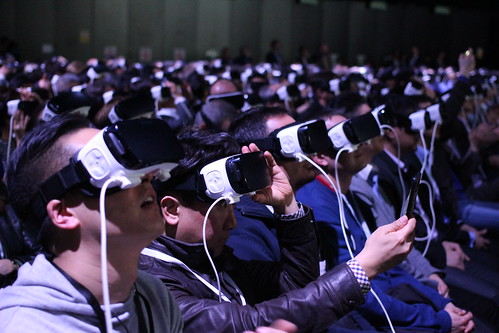 |
| CC0 Public domain by Nikolayhg on Pixabay |
Lectures are easy to arrange and plan and seem to be an effective way of addressing a large group of first or second year students at the same time. They are also usually the first teaching method to be made digital since lecture capture is relatively simple to do and it doesn't really change the status quo except for the question of whether students will bother to come to the lectures if they know that a recording will be available. However a new study from the University of Aberdeen, Turn up, tune in, don’t drop out: The relationship between lecture attendance, use of lecture recordings, and achievement at different levels of study, shows that these fears are not justified and that recorded lectures have very little effect on student attendance and they have a positive effect on many students' learning (or at least their test scores). The study shows that the recordings are particularly helpful as study aids for first year students and that they are especially appreciated by non-native English speakers who get the chance to go through the lecture at their own pace.
Importantly, despite anecdotal fears,we find little evidence to substantiate the claim that providing recordings reduces attendance or negatively impacts achievement, instead, we find positive evidence that the recordings are seen as particularly helpful for non-native speakers in first year as they adjust to a new language environment.
Lecture recordings were of less importance to students in their third and fourth years, presumably because the focus there is not so much on learning fundamental principles and facts and more on deeper learning. The study will hopefully calm the fears that many teachers have about letting students have access to their lectures either in recorded form or at least as slideshows or text summaries. These are valuable to students' learning and more importantly are an essential accessibility feature, allowing students with special needs to review material in the form they prefer.
However the real issue here is the value of lectures as synchronous activities. One-way communication like this should be prerecorded and made available to students before the scheduled class activity. The classroom session should then be as interactive as possible, making the session effectively unmissable. First year students especially need more time for deeper discussion, inquiry and collaboration and valuable contact time should not be wasted on monologue, no matter how knowledgeable the teacher may be. Occasional traditional lectures can certainly be inspiring but only when the speaker is an excellent presenter. Otherwise let's provide good prerecorded input for students, preferably in short bite-sized chunks of around 10 minutes, together with quizzes or questions for discussion and free up classroom time for activity.
Read more on this in an article in The Learning Scientists blog, Lecture Attendance, Lecture Recordings, and Student Performance: A Complex, but Noteworthy Relationship.
Reference
Nordmann, E., Calder, C., Bishop, P., Irwin, A., & Comber, D. (2017, November 10). Turn up, tune in, don’t drop out: The relationship between lecture attendance, use of lecture recordings, and achievement at different levels of study. Retrieved from psyarxiv.com/fd3yj



















